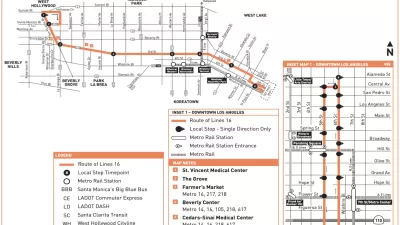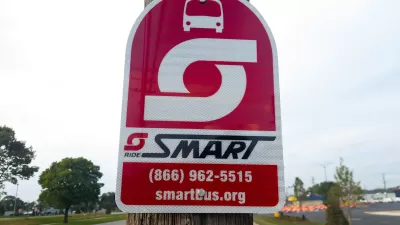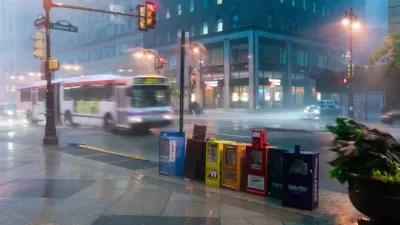Buses are often the best tool for making a dynamic, equitable city, but they're in a period of decline that shouldn't be allowed to become a death spiral.

Public transit in general is on the decline in the United States, and buses in particular have seen sharp drop-offs in travel speed, investment, and ridership. "Nearly 90 percent of commuters in this country drive private cars, and in many urban areas traffic congestion—i.e., wasted time, gas, and money—is getting worse," Laura Bliss writes for CityLab.
In most American cities, traffic congestion is slowing down buses as well, but there are good reasons to keep investing in buses. Not only are they cheaper and more versatile than rail and point-to-point transit, but also "buses can carry large numbers of people in a compact amount of road space. They don’t require special rights-of-way (though that’s sometimes ideal)," Bliss writes.
The recession saw cuts to bus funding that, in many cases, never got replaced during the recovery. And while some cities opted to invest in other forms of transit, the results have been mixed. "Even some cities on rail-building bonanzas, such as L.A. and Denver, are watching transit ridership decline across the board, in part because investment in buses has trailed so far behind the commitment to trains," Bliss argues. As people flee buses and services decline, their constituency gets smaller and less powerful. "They are disproportionately people of color, reinforcing the racial stigma associated with the bus in many cities," Bliss writes.
FULL STORY: Love the Bus, Save Your City

Study: Maui’s Plan to Convert Vacation Rentals to Long-Term Housing Could Cause Nearly $1 Billion Economic Loss
The plan would reduce visitor accommodation by 25,% resulting in 1,900 jobs lost.

North Texas Transit Leaders Tout Benefits of TOD for Growing Region
At a summit focused on transit-oriented development, policymakers discussed how North Texas’ expanded light rail system can serve as a tool for economic growth.

Why Should We Subsidize Public Transportation?
Many public transit agencies face financial stress due to rising costs, declining fare revenue, and declining subsidies. Transit advocates must provide a strong business case for increasing public transit funding.

How to Make US Trains Faster
Changes to boarding platforms and a switch to electric trains could improve U.S. passenger rail service without the added cost of high-speed rail.

Columbia’s Revitalized ‘Loop’ Is a Hub for Local Entrepreneurs
A focus on small businesses is helping a commercial corridor in Columbia, Missouri thrive.

Invasive Insect Threatens Minnesota’s Ash Forests
The Emerald Ash Borer is a rapidly spreading invasive pest threatening Minnesota’s ash trees, and homeowners are encouraged to plant diverse replacement species, avoid moving ash firewood, and monitor for signs of infestation.
Urban Design for Planners 1: Software Tools
This six-course series explores essential urban design concepts using open source software and equips planners with the tools they need to participate fully in the urban design process.
Planning for Universal Design
Learn the tools for implementing Universal Design in planning regulations.
Ascent Environmental
Borough of Carlisle
Institute for Housing and Urban Development Studies (IHS)
City of Grandview
Harvard GSD Executive Education
Toledo-Lucas County Plan Commissions
Salt Lake City
NYU Wagner Graduate School of Public Service





























